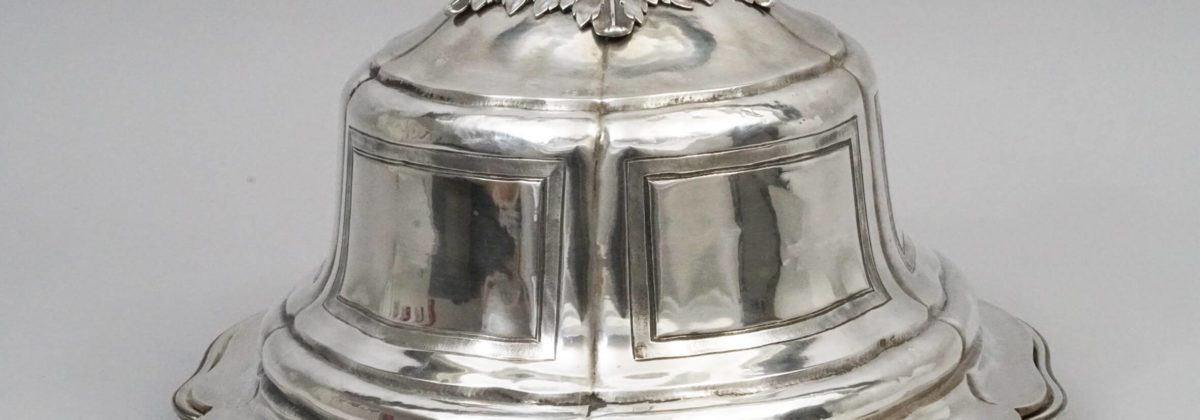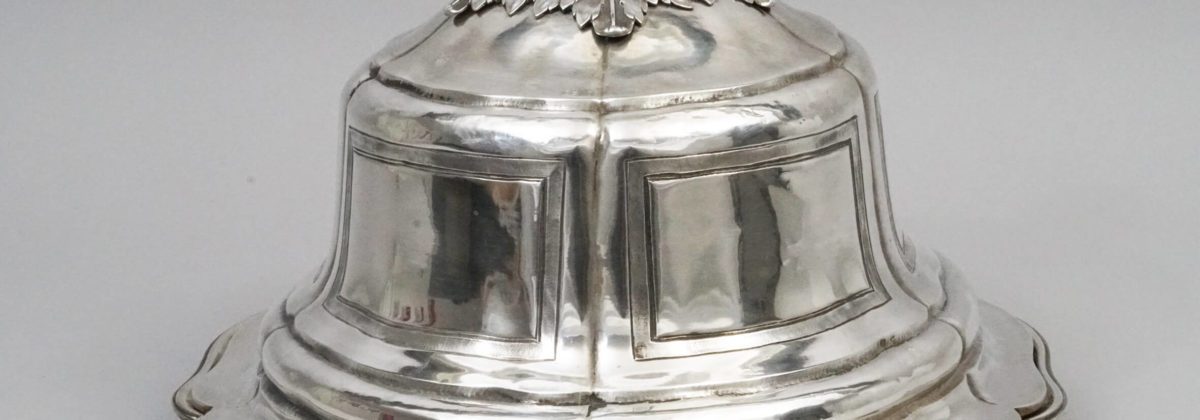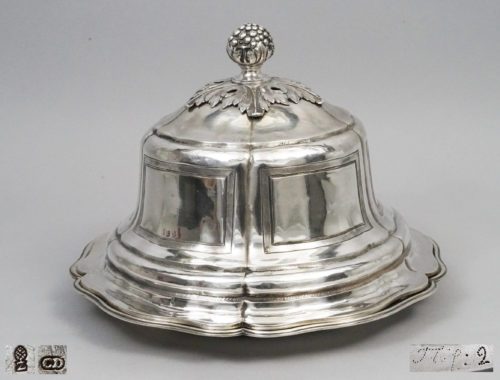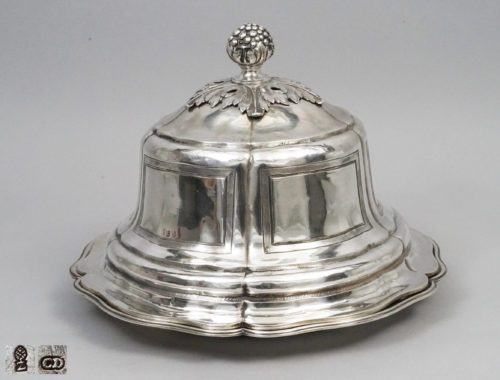Object number :444
Augsburg 1779 – 1781
Maker: CHRISTIAN DRENTWETT II
13 1⁄4 in. (33.6 cm.) wide
80 oz. 17 dwt. (2,515 gr.)
Provenance
Ordered by Catherine the Great, Empress of Russia (r.1762-1796) for use in the Governor’s Palace, Perm.
Recalled to Winter Palace, St Petersburg, by her successor Paul I, Emperor of Russia (r.1796-1801).
Sold by The Soviet Government.
Detailed Description
The shaped circular dish with moulded border, the conforming cover with acanthus and foliate-clasped berried terminal, marked underneath of dish and outer rim of cover, struck with number ‘2″ to dish and cover, the dish further prick-engraved ‘?:p:2’
This dish cover is en suite to those commisioned by Catherine the Great from the Paris goldsmith Robert-Joseph Auguste. Twenty-two silver table services were ordered for the new seats of regional government which Her Imperial Majesty established in Russia. To avoid transporting silver during her tours of the country, Catherine decreed that each centre of government should have a complete service of its own. Four of the French-made services employed the talents of one of the greatest silversmiths of the 18th century, Robert-Joseph Auguste. He was involved in producing, with the help of Louis-Joseph Lenhendrick and Charles Spriman, the services for Kazan (1778-1779), Nizhny-Novgorod (1778-1779), Ekaterinoslav (1776-1778) and Moscow (1782-1783).
Five services were commissioned from Russian, London and Augsburg silversmiths. Christian Drentwett was ordered in the 1780s to produce the Permschen (1779-1781) and Charkowschen services. The services are all engraved with the same cyrillic inventory numbers, here ‘??” for Permschen, and other dish covers square, rectangular and circular can be found in museums including in the Musée Nissim de Camondo and the Musée des Arts Décoratifs in Paris.
After Catherine’s death the services were re-called to St Petersburg by her successor, Tsar Paul the First. The next full published assessment of the remaining pieces is by Baron A de Foelkersam, in 1907. In the aftermath of the Revolution, the new Soviet Government sold some of the elements of the services along with other treasures from the Imperial collections.
Catherine the Great and the Silver Services
The tsarina Catherine II of Russia (1729-1796), called Catherine the Great, had organised a new Russian Empire since 1775. Many Governorates should now be united in stadtholders. For these new administrative and political structures, new general governors had to be appointed. When Catherine the Great was making travels to these new provinces, she sojourned in the governor’s residences, which were furnished and equipped with silver and vermeil-table services for the luxurious reception and stay, appropriate for a tsarina. The commissions of Catherine for such sumptuous, silver services not only provided her with the necessary courtly luxury, but they were also representative artefacts of her power and importance. Besides, they also formed a kind of treasure that she could have it melted down, if needed.
Paul I (1754-1801), son and successor of Catherine (r. 1796-1801) had ordered shortly after his accession to power, the services to be brought in St. Petersburg in the Winter Palace. There, they acquired inventory numbers and dotted names (e.g. Kharkov). The history of the services in the nineteenth and twentieth century is not entirely known. It appears that the service of Kharkov was still in the Winter Palace during the nineteenth century (Folkersam 1907). In the twentieth century, some parts were brought to Moscow (the Kremlin Armoury and the Historical Museum), while other parts were given in auctions in diverse foreign countries.





